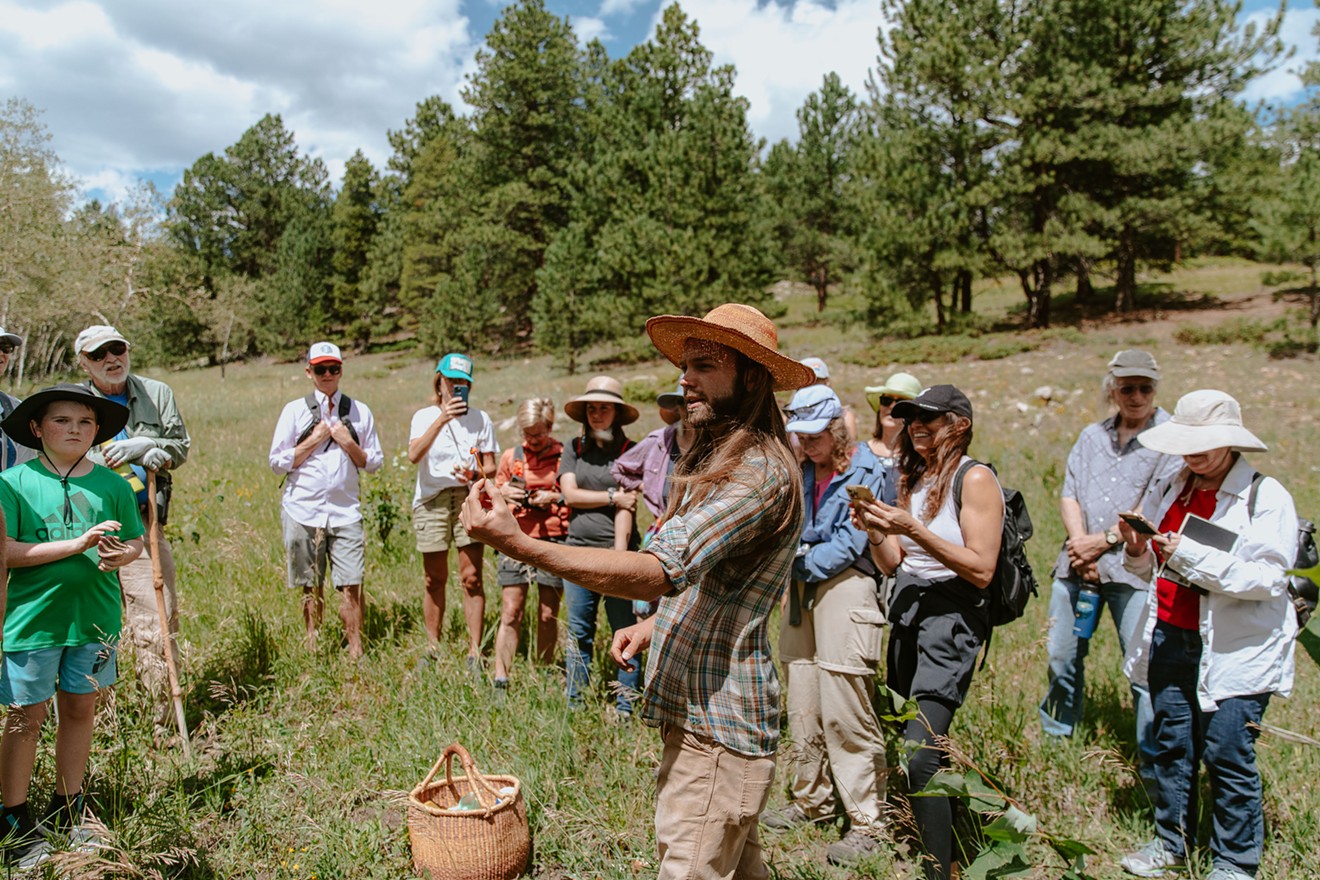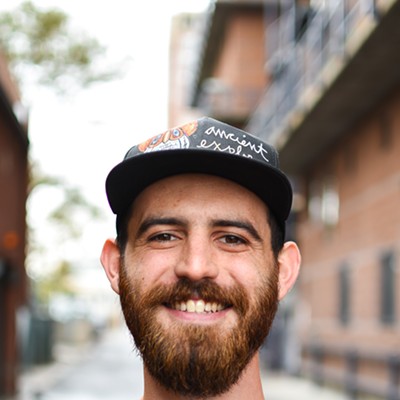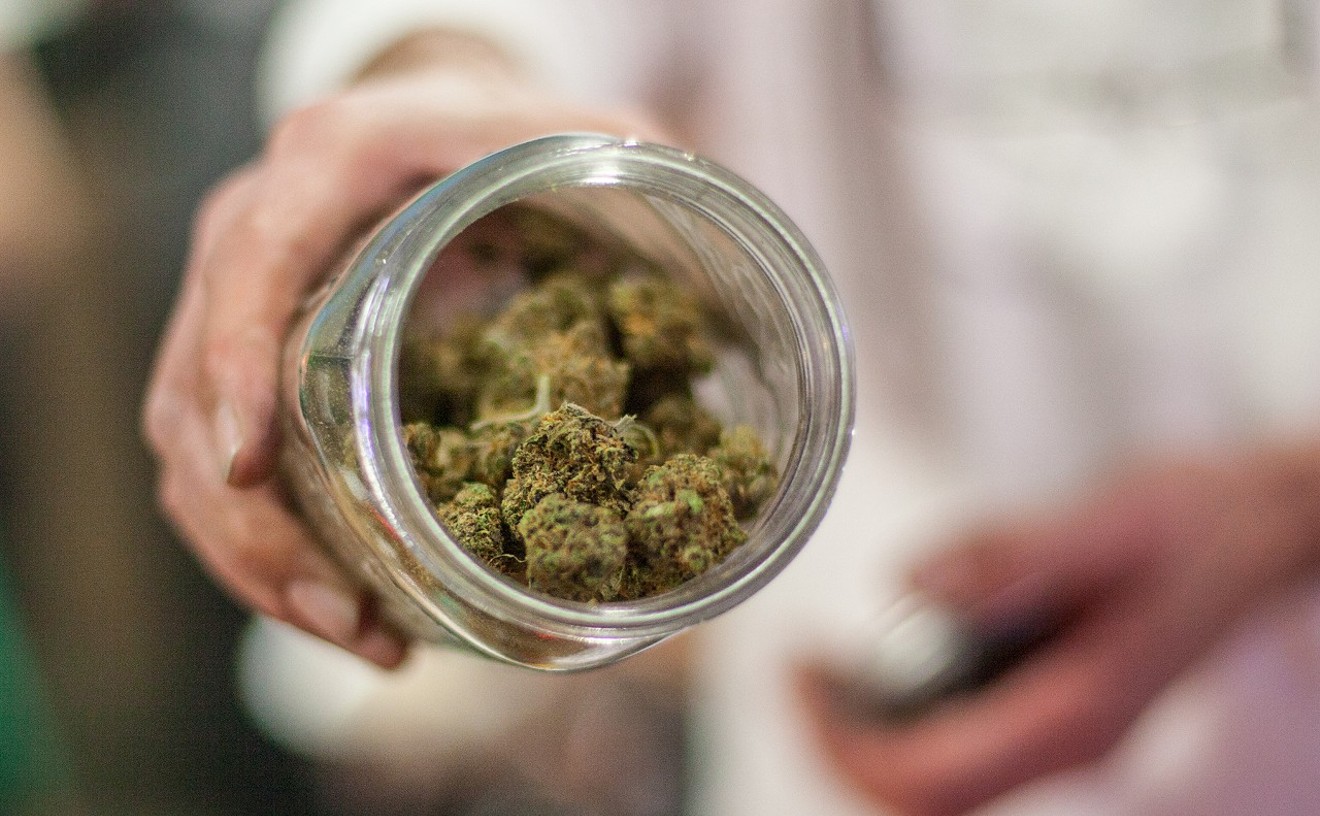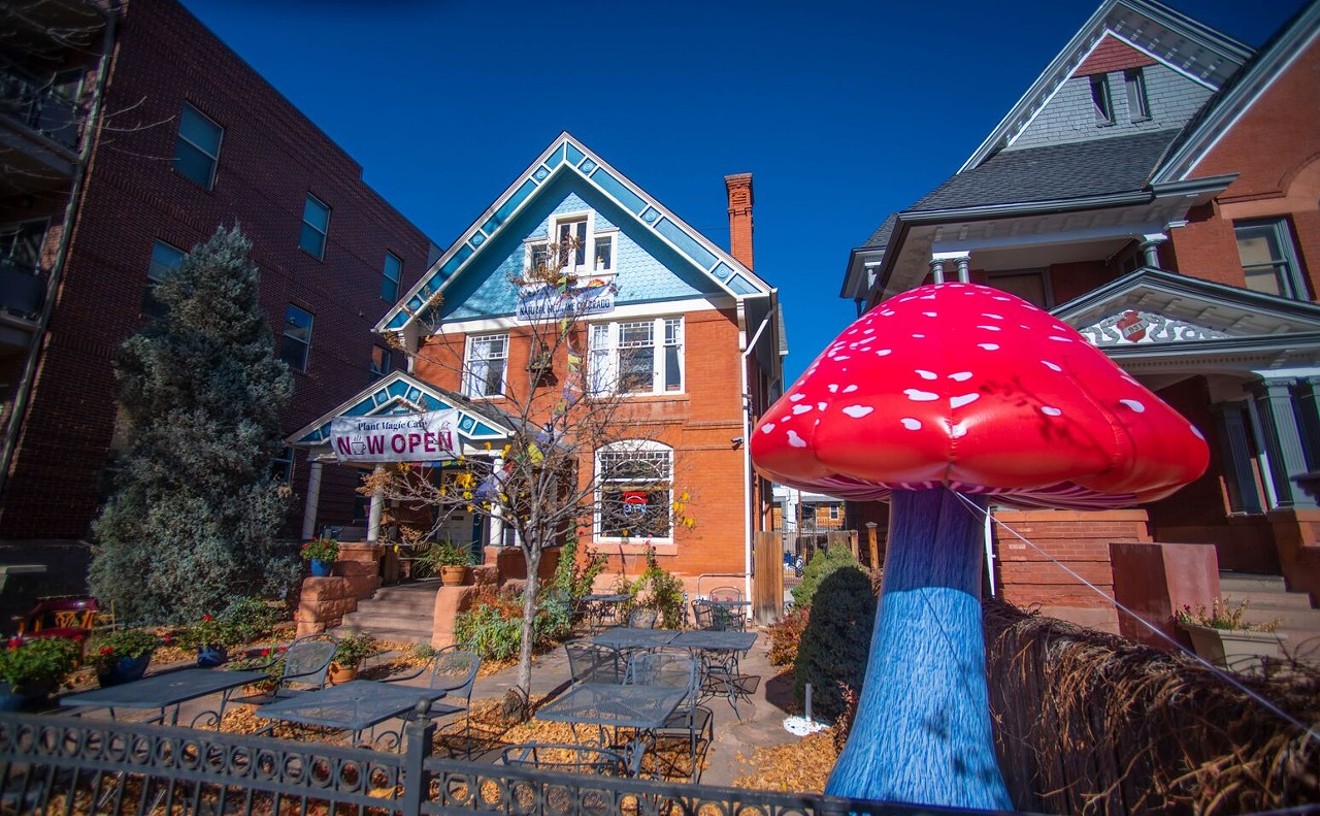Most of us were told the same thing about wild mushrooms when we were growing up: Don't touch!
Times are changing, however, and so is our connection to fungi. As Coloradans come around on the power of mushrooms — magic or otherwise — the Boulder Museum of Contemporary Art is stepping up on both the arts and educational fronts, partnering with an expert field guild and botanical illustrator for Marvelous Mushrooms, a weeks-long class to promote the upcoming exhibit agriCULTURE: Art Inspired by the Land.
Participants in the Marvelous Mushrooms classes will learn how to identify, forage, sketch and paint various mushrooms found in Colorado, according to BMoCA outreach education manager Melinda Laz, who coordinates the class with marketing director Jennifer Chaparro. The organizers are hopeful that Colorado's current mushroom boom will help drive people to the agriCULTURE exhibit, which celebrates the connection between art and rural farming in Colorado. To learn more about it, we caught up with Laz and Chaparro.
Westword: Is this the first time the museum has held adult-focused classes?
Melinda Laz: We have always done children and youth classes, but this is the first time that we are making a concerted effort to do a multi-week art class program for adults. We do one-off programs that are aligned with our different exhibitions, which are a three-hour workshop or weekend workshop. But this is the first time that we're taking on workshops and classes that are four weeks long and targeting adults who want to learn a particular skill or technique. So we're piloting that this year to align with our summer exhibition, which is called agriCULTURE. AgriCULTURE is a bigger initiative between BMoCA and the Longmont Museum.
It sounds like these classes help people understand the art exhibitions more.
Jennifer Chaparro: There are new classes to help people identify the mushrooms when they're out in the field, with the added component of the drawing, so it's kind of a two-fer. Basically, you're going to identify the mushrooms, but also do a little sketching, and you don't have to be an artist to do it. It's just nice to have those sketches — and you can take a few photos for references when you're back out in the field.
Maybe a field guide, as well, then?
Laz: Yeah, for sure. The way we've structured it, we have the forage workshop, which is a one-day workshop on August 31, from 9 a.m. to 12 p.m. And that is out in the field, walking on a trail. We've connected with a gentleman named Zach Hedstrom; he runs Boulder Mushroom, which is a mushroom farm and resource center. He's a farmer by training, and he goes on these forage workshops with the public, and he's worked with our drawing instructor in the past, as well. So that's the first component.
It'll just be a three-hour easy hike somewhere in Boulder County. And then folks can sign up for the three-week drawing class that we're calling Drawing Mushrooms, which runs on September 7, 14 and 21 — three Thursdays in a row. That drawing class will be taking some of the knowledge that folks have learned in the forage workshop and delving more specifically into looking at the mushrooms, talking about botanical illustration, and techniques that are used to accurately draw those specimens. Our instructor for that is Marjorie Leggitt.
Marjorie will enhance the different specimens with what can be purchased locally, also. I think she'll have students go to Whole Foods, Trader Joe's or other places where they can buy a variety of mushrooms and bring those to class, and they'll also have their mushrooms that they had collected the week prior.
Chaparro: The group is going to do a little bit of hiking, so we definitely want people to know that. But we're going to be supplying them with the notebooks, pencils and stuff, so they don't really need to bring anything for the actual sketching.
Laz: These are for all skill levels. We're targeting adults, but our instructor is open to teens taking the classes, as well, so they're welcome to register, too. We'd love to just get a diverse sampling of folks coming to BMoCA to see the exhibit and participate in the classes.
How does one spot dangerous mushrooms? Are they like tree frogs, where the brighter and more colorful they are, the more dangerous they are?
Chaparro: I'm not sure. I've lived places where people have been foraging around my backyard in the woods, and I just didn't know enough about them to to be able to pick them and trust myself. But Zach knows everything about it, so I would trust him. I think it would be really interesting to do that with somebody who knows what they're doing.
Laz: There is more information about that on his website, too: bouldermushroom.com. Everything seems quite busy right now, because this is the prime forage time of year.
We're not used to seeing mushroom art that isn't part of a counterculture or doesn't glow in the dark, but mushrooms of all kinds are becoming popular. Did you think about that when trying to craft the materials and messaging for the class?
Laz: I think that we were capitalizing on the popularity of mushrooms right now, because it has been in the public domain, in terms of medicinal mushrooms and things of that nature. Now, we are obviously not going to be sampling [psilocybin] mushrooms of anything of that sort during the class. We're focusing more on the scientific and sort of the botany perspective. Given that Marjorie Leggett is such a well-known botanical illustrator, we're hoping she brings a lot of folks to the program, as well.
How important is it to kind of weave current events or public interest into these workshops that you're doing?
Chaparro: This exhibition coming up is so rooted in agriculture and farming, the fact that the mushroom thing came up was just serendipitous, because we were looking for things that would enhance the farming aspect and tie this all together. And, with having Marjorie, her background was perfect for this.
Was hemp or marijuana considered for the agriCULTURE exhibit?
Chaparro: I don't think so. One of the artists is working with dirt, and another one is working with flowers, and another one's working with the flow of water, like flowing from one to another. We honestly have not seen the final pieces yet, because the artists are still working on it. The pieces these artists were commissioned to do are in conjunction with the farms, and we're very anxious to see them.
Is that common for most art exhibitions, to not see the work until the artists turns it in?
Chaparro: This is kind of unusual. I mean, sometimes they do this, but most of the time, the artists have their work or body of work. They might have one or two pieces that they're working on, but generally we kind of know what's going to be going up. So this was this was a little bit different; I think they've been working on these for about four years. It was a little bit of a struggle to get everybody on the same plane and on the same table and get everybody organized. It was a big effort.
Laz: It was a really interesting exercise for these artists and farmers to think in different ways about what each of them do as individuals, and how they can come together and create something totally new. Thinking about artists as farmers and farmers as artists, and there was that interesting overlap. These classes we're holding are just an add-on to the overall topic we're exploring.
One example of how it comes together is an artist, Esther HZ. She worked with a farm that raises cows just for their manure. These cows are treated like royalty. Schoolchildren had gone to the farm to sing to the cows, because it has been show that cows' stress levels go down when they hear music. So this artist went to the farm and played her flute to the cows ,and it was really a fun video. That's just one example of one of the projects that are being worked on.
That sounds like the Kobe beef of manure.
Chaparro: Yeah. It's good stuff.
For more information on agriCULTURE or to sign up for BMoCA's mushroom classes, visit bmoca.org or send an email to education@[email protected].
[
{
"name": "Air - MediumRectangle - Inline Content - Mobile Display Size",
"component": "12017618",
"insertPoint": "2",
"requiredCountToDisplay": "2",
"watchElement": ".fdn-content-body",
"astAdList": [
{
"adType": "rectangle",
"displayTargets": "mobile"
}
]
},{
"name": "Editor Picks",
"component": "17242653",
"insertPoint": "4",
"requiredCountToDisplay": "1",
"watchElement": ".fdn-content-body",
"astAdList": [
{
"adType": "rectangle",
"displayTargets": "desktop|tablet"
},{
"adType": "rectangle",
"displayTargets": "desktop|tablet|mobile"
}
]
},{
"name": "Inline Links",
"component": "18838239",
"insertPoint": "8th",
"startingPoint": 8,
"requiredCountToDisplay": "7",
"maxInsertions": 25
},{
"name": "Air - MediumRectangle - Combo - Inline Content",
"component": "17261320",
"insertPoint": "8th",
"startingPoint": 8,
"requiredCountToDisplay": "7",
"maxInsertions": 25,
"watchElement": ".fdn-content-body",
"astAdList": [
{
"adType": "rectangle",
"displayTargets": "desktop|tablet"
},{
"adType": "rectangle",
"displayTargets": "desktop|tablet|mobile"
}
]
},{
"name": "Inline Links",
"component": "18838239",
"insertPoint": "8th",
"startingPoint": 12,
"requiredCountToDisplay": "11",
"maxInsertions": 25
},{
"name": "Air - Leaderboard Tower - Combo - Inline Content",
"component": "17261321",
"insertPoint": "8th",
"startingPoint": 12,
"requiredCountToDisplay": "11",
"maxInsertions": 25,
"watchElement": ".fdn-content-body",
"astAdList": [
{
"adType": "leaderboardInlineContent",
"displayTargets": "desktop|tablet"
},{
"adType": "tower",
"displayTargets": "mobile"
}
]
}
]












